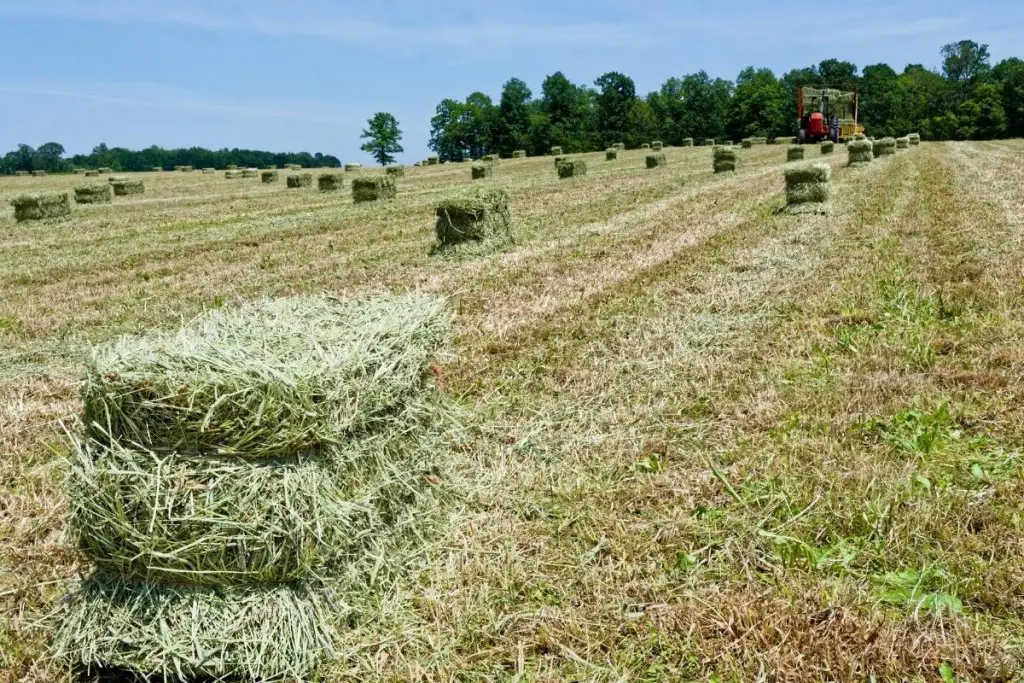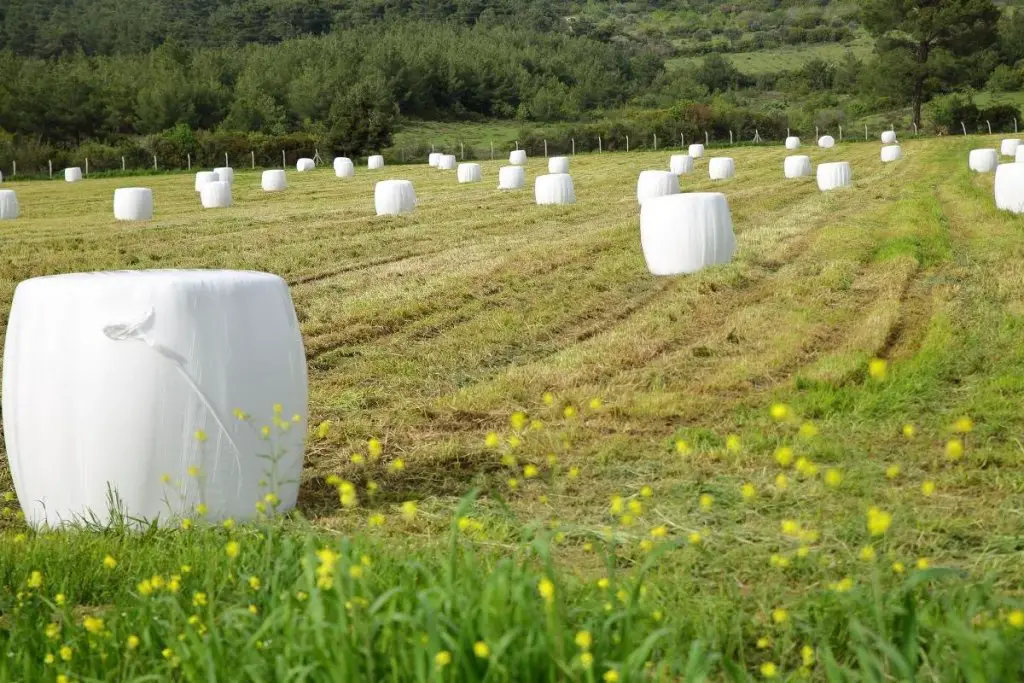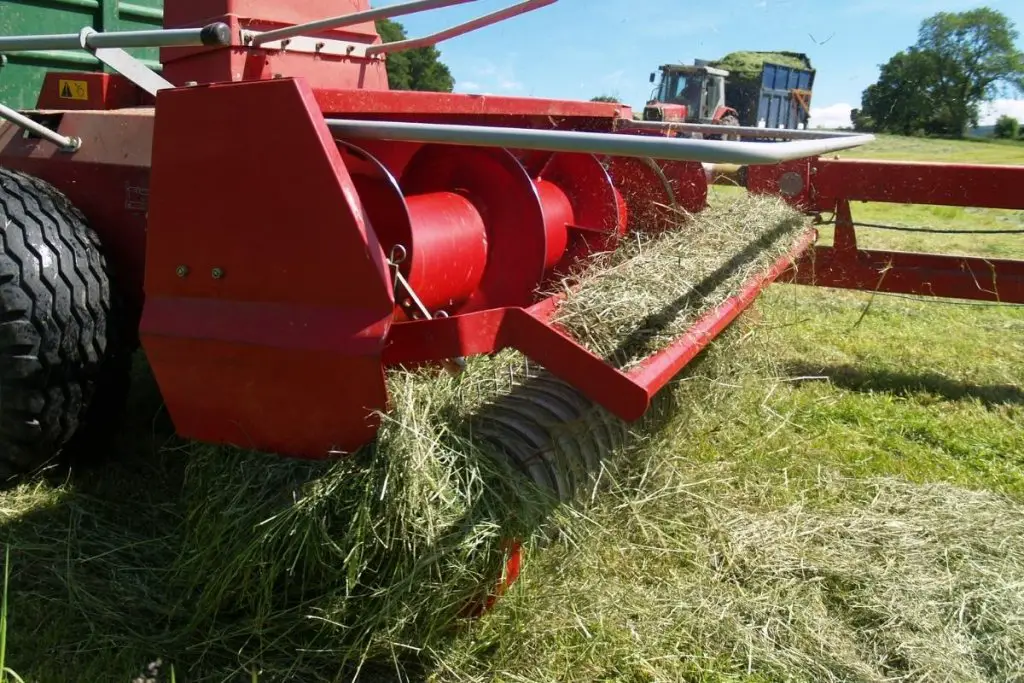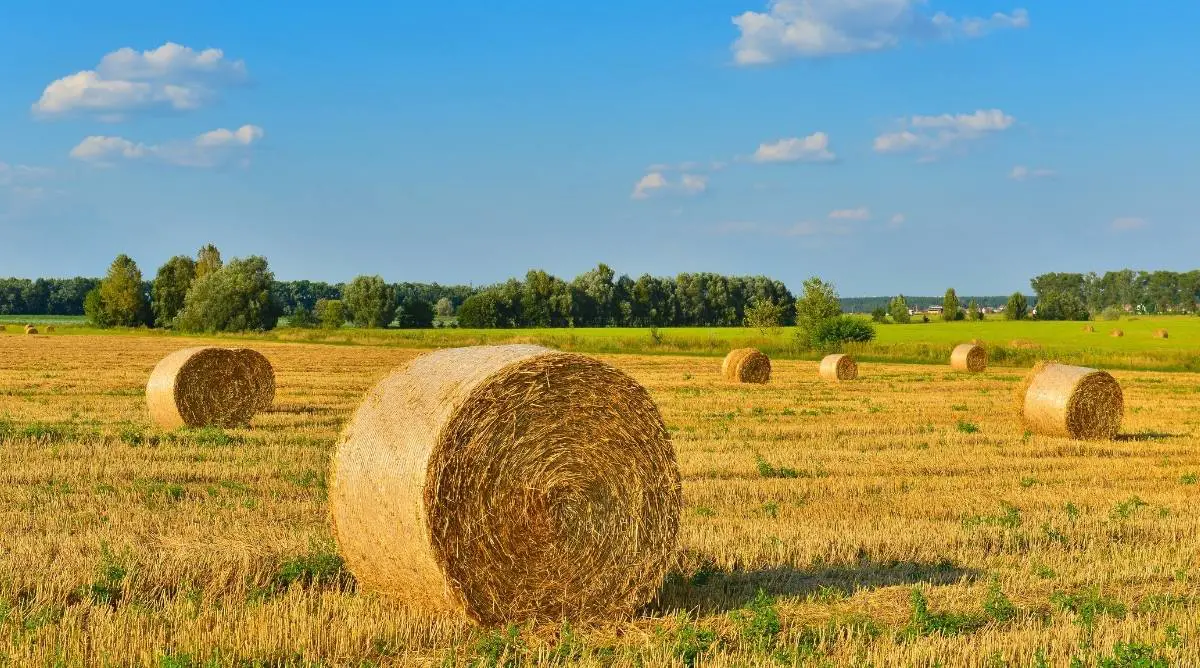Silage is high-moisture green forage that's put into air-tight packaging and stored in silos. Hay is grass that's cut, dried, and packed into bales. Both are fed to livestock. Silage has a higher nutritional content and is ideal for wetter regions. Hay is cheaper and easier to store.
Table of Contents
Silage vs Hay
| Silage | Hay | |
| Preparation | Green grass is cut, packed in airtight bundles without drying first, fermented, and stored in silos | Grass is cut, dried, baled, and stored in a dry environment |
| Moisture % | 40-60% | 12% |
| Storage | Stored in airtight bundles covered in multiple layers of plastic wrap | Stored in bales in a dry environment |
| Preservation | Fermentation preserves the silage | Low moisture content preserves the hay and keeps it fresh longer |
| Digestion | Easily digested | Not easily digested |
Silage takes longer to prepare than hay, but contains more nutrients. It may be your best option if the weather in your location is not conducive to drying hay.
Due to the high moisture content in silage, it can retain more nutrients than hay. The silaging process does not add any extra nutrients to the fodder. It only preserves what is already present.
Hay is easier to manage than silage. Silage bales need to remain air-tight. If the plastic wrap seal is broken or the bundle is opened, it will heat up and get spoiled.
High production cost is the number one disadvantage of silage compared to hay. You’ll need more capital investment for the seeds, fertilizer, machinery, and labor.
Silage also needs to be handled with caution and can spoil easily.
What is Hay?
Hay is preserved animal feed made from grass that has been cut and dried outside in the sun and stored in bales. It’s mainly used to feed ruminants in the winter when there’s no animal pasture.
This dry fodder can be made from either grass or legume plants like alfalfa or clover. It’s dried to a moisture level of 12%, then packed into bales, and used as fodder for sheep, cattle, and other livestock. The drying process to prepare it helps to preserve the feed for many days.
Hay can also be used for other garden applications; however, its primary use is feeding animals.
Hay is Different than Straw
Many people confuse hay with straw, but they aren’t the same. Hay is used for feeding animals, while straw is used for animal bedding or for other agricultural purposes.
Straw is made from grain stacks of wheat, barley, rice, or oats. The stacks are first threshed to remove the seeds and chaff, then completely dried. The end product is used as livestock bedding, for mulching gardens, or as an additional ingredient in making compost.
Since straw is drier than hay, it has a golden color. Hay has a greenish color. Hay has a much higher nutritional value than straw.
How is Hay Made?

Hay is made by cutting grass and drying it out in the fields under the natural sunlight. After reaching a moisture level of 12%, hay is stored in bales and kept in barns in a dry environment.
The haymaking process begins by planting grass. The ideal type of grass for making hay depends on your region’s climate and the animals you’ll be feeding. You can use:
- Ryegrass (Lolium species)
- Fescues (Festuca species)
- Timothy grass
- Orchard grass
- Bermuda grass
After harvesting the grass, the next step is drying it in open fields under the sun.
Once the moisture content reduces to about 12%, pack the grass into bales. Hay bales can be either round or square, with the round bales often larger than the squares. The shape of the hay bales depends on the machinery used to pack them.
Finally, store the hay bales in a dry environment like a barn.
What is Silage?

Silage is different from hay because it’s fermented and wrapped in plastic. Silage is fermented forage made from green grass, legumes, or grass crops such as maize and sorghum.
These organic materials are cut, compacted into bundles, wrapped with polythene sheets, and stored in silos.
Silage should have 40-60% moisture content. If it’s higher than 60%, the silage will get spoilt and lose nutrients. If it’s too dry (12-40% moisture content), it’s known as haylage.
How to Make Silage

Making silage is more complex than making hay. It also takes longer. However, it’s not as dependent on the weather.
Making silage begins by planting the foliage. You can use either of the following:
- Grass
- Cereal crops like corn or sorghum
- Legumes like clovers or alfalfa
Harvesting should be done when the grass or crop is still green.
Chop up the grass and pack it into well-compacted bundles. Seal each bundle with multiple layers of plastic wraps. The sealed bundles should be left to ferment for about 21 days before they form silage that’s ready to feed your livestock.
The Silage Fermentation Process
Packaging foliage clippings into air-tight bundles using plastic wraps prevents air from getting into contact with the foliage.
The seal creates an anaerobic environment conducive to microbes. The microbes break down the water-soluble carbohydrate component of the foliage through anaerobic fermentation.
The fermentation process results in the production of organic acids (acetic and lactic acid), which reduce the pH level in the bundle of forage. The acidic environment stops the growth of microbes. At that point, the silage is ready for use.

